
Charles-François Daubigny was a French painter, one of the members of the Barbizon school, and is considered an important precursor of impressionism.

Pierre Puvis de Chavannes was a French painter known for his mural painting, who came to be known as "the painter for France". He became the co-founder and president of the Société Nationale des Beaux-Arts, and his work influenced many other artists, notably Robert Genin, and he aided medallists by designs and suggestions for their works. Puvis de Chavannes was a prominent painter in the early Third Republic. Émile Zola described his work as "an art made of reason, passion, and will".

Antoine Bourdelle, born Émile Antoine Bordelles, was an influential and prolific French sculptor and teacher. He was a student of Auguste Rodin, a teacher of Giacometti and Henri Matisse, and an important figure in the Art Deco movement and the transition from the Beaux-Arts style to modern sculpture.

Émile Adolphe Gustave Verhaeren was a Belgian poet and art critic who wrote in the French language. He was one of the founders of the school of Symbolism and was nominated for the Nobel Prize in Literature on six occasions.
Paul Émile de Puydt, a writer whose contributions included work in botany and economics, was born and died in Mons, Belgium. His father was Jean Ambroise de Puydt (1758–1836), who was governor of the province Hainaut in the early days of Belgium from 1830 till 1834. In the first marriage of his father there were 6 children. The famous Remi de Puydt came from this first marriage. He is a half brother of Paul Émile de Puydt. Remi de Puydt was a civil engineer and a politician (representative), and he served in the Belgian army as a colonel.
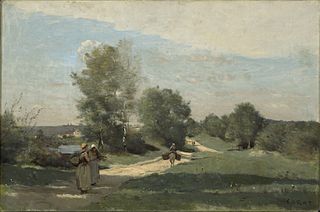
The Barbizon school of painters were part of an art movement toward Realism in art, which arose in the context of the dominant Romantic Movement of the time. The Barbizon school was active roughly from 1830 through 1870. It takes its name from the village of Barbizon, France, on the edge of the Forest of Fontainebleau, where many of the artists gathered. Most of their works were landscape painting, but several of them also painted landscapes with farmworkers, and genre scenes of village life. Some of the most prominent features of this school are its tonal qualities, color, loose brushwork, and softness of form.
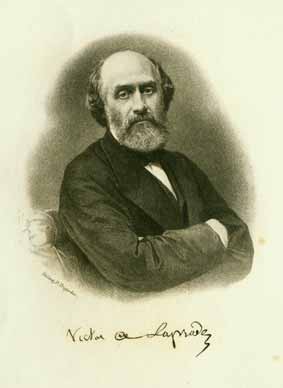
Pierre Martin Victor Richard de Laprade, known as Victor de Laprade, was a French poet and critic.
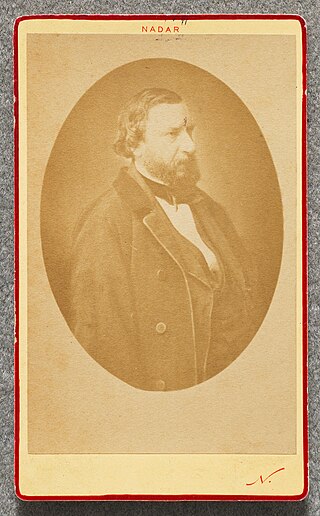
ʝ

Jules Adolphe Aimé Louis Breton was a 19th-century French naturalist painter. His paintings are heavily influenced by the French countryside and his absorption of traditional methods of painting helped make him one of the primary transmitters of the beauty and idyllic vision of rural existence.
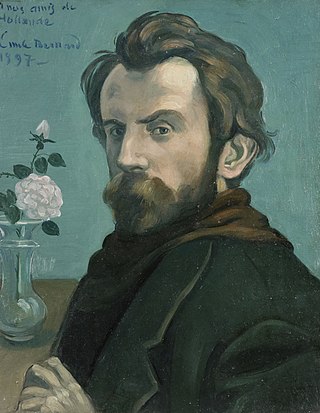
Émile Henri Bernard was a French Post-Impressionist painter and writer, who had artistic friendships with Vincent van Gogh, Paul Gauguin and Eugène Boch, and at a later time, Paul Cézanne. Most of his notable work was accomplished at a young age, in the years 1886 through 1897. He is also associated with Cloisonnism and Synthetism, two late 19th-century art movements. Less known is Bernard's literary work, comprising plays, poetry, and art criticism as well as art historical statements that contain first-hand information on the crucial period of modern art to which Bernard had contributed.

A cartulary or chartulary, also called pancarta or codex diplomaticus, is a medieval manuscript volume or roll (rotulus) containing transcriptions of original documents relating to the foundation, privileges, and legal rights of ecclesiastical establishments, municipal corporations, industrial associations, institutions of learning, or families. The term is sometimes also applied to collections of original documents bound in one volume or attached to one another so as to form a roll, as well as to custodians of such collections.
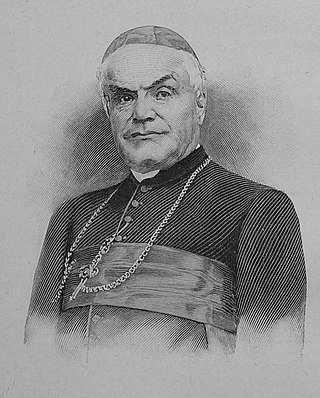
François-Désiré Mathieu was a French Bishop and Cardinal.
Émile Bréhier was a French philosopher. His interest was in classical philosophy, and the history of philosophy. He wrote a Histoire de la Philosophie, translated into English in seven volumes. This work inspired Frederick Copleston's own History of Philosophy (1946–1975), initially comprising nine volumes.
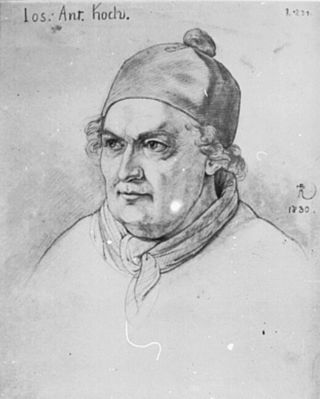
Joseph Anton Koch was an Austrian painter of Neoclassicism and later the German Romantic movement; he is perhaps the most significant neoclassical landscape painter.
Jean-Baptiste Terrien was a French Jesuit dogmatic theologian.

Louis-Léonard de Loménie was a French scholar and essayist. He is best known for his biography of Pierre-Augustin Caron de Beaumarchais, and also edited this author's complete works.

Le Moulin de la Galette is the title of several paintings made by Vincent van Gogh in 1886 of a windmill, the Moulin de la Galette, which was near Van Gogh and his brother Theo's apartment in Montmartre. The owners of the windmill maximized the view on the butte overlooking Paris, creating a terrace for viewing and a dance hall for entertainment.
Moses of Évreux was a French tosafist, one of three brothers, and author of a siddur, who flourished at Évreux in Normandy in the first half of the thirteenth century. His father was Shneur of Évreux who left behind three children each of them outstanding scholars: Moses of Évreux, Samuel of Évreux and Isaac of Évreux. Moses was the oldest brother and teacher of his younger brothers. They were collectively called "the sages of Évreux".

Jan Kobell was a Dutch animal and landscape painter.

Émile Keller was a French writer and politician.


















